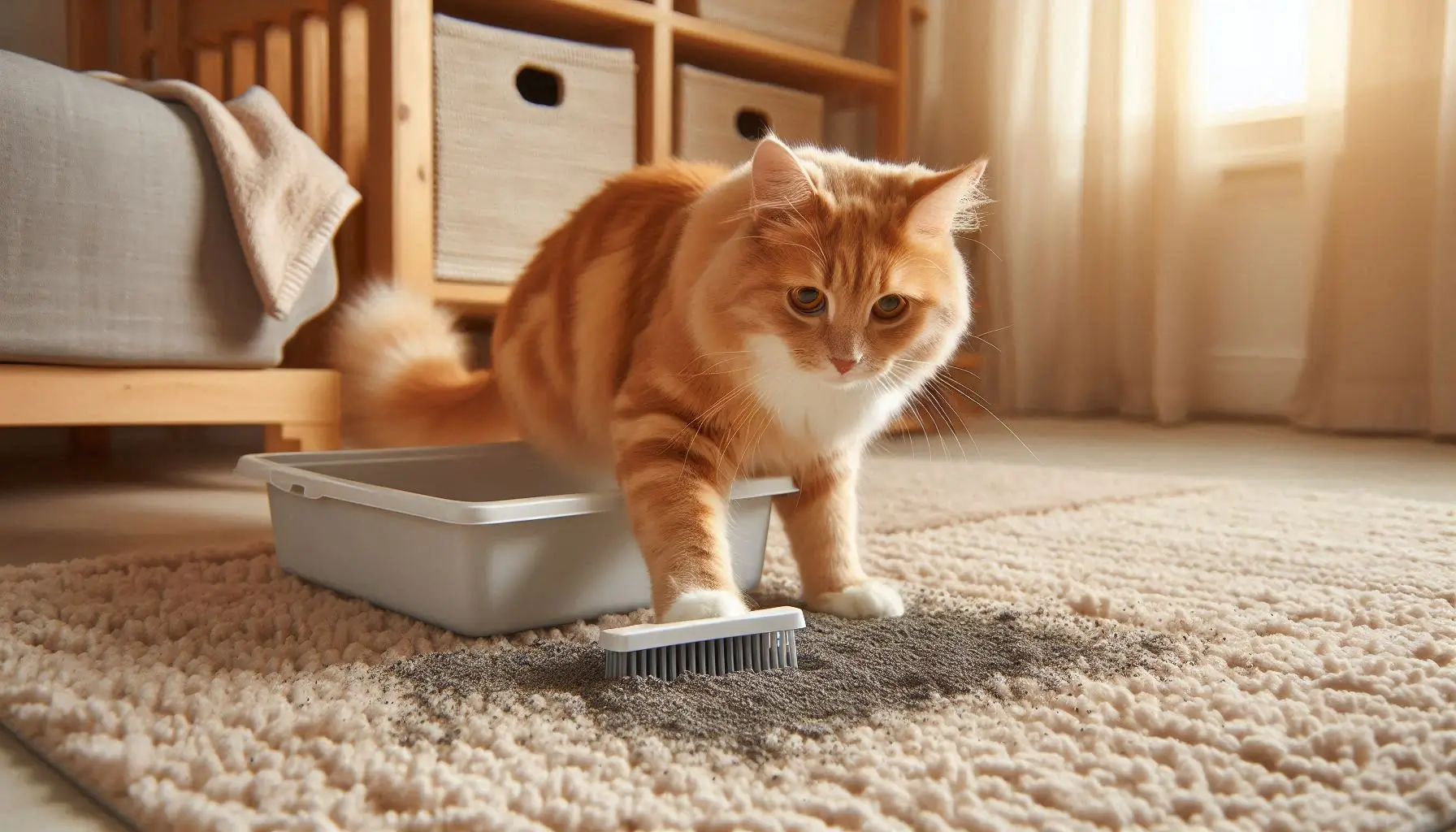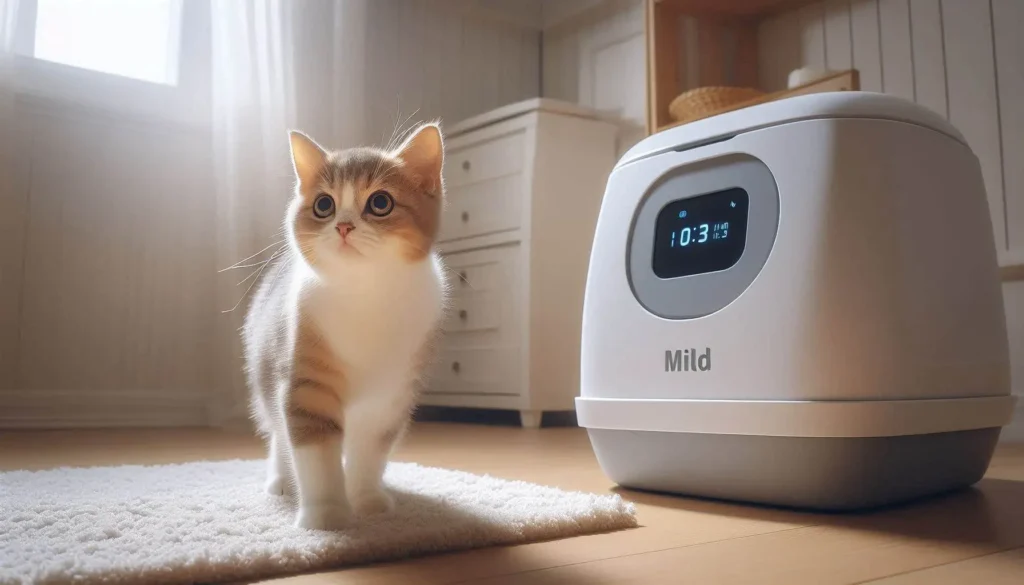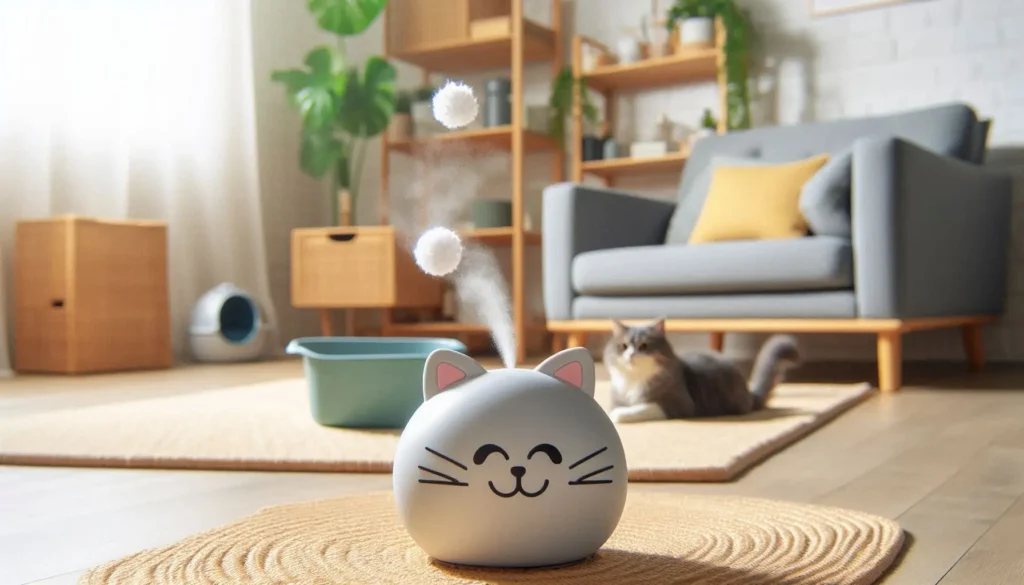5 Simple Ways to Stop Your Cat from Peeing Outside the Litter Box
We independently research, review, and recommend the best products—If you buy something through our links, we may earn an affiliate commission.

Does your feline friend keep leaving unwelcome surprises around the house? You’re not alone. Inappropriate urination, or peeing outside the litter box, is a frustrating but common problem for cat owners. Luckily, with some patience and detective work, you can usually uncover the reason behind this behavior and get your cat back on track.
Why is my cat peeing outside the cat litter?
There are two main reasons a cat starts peeing outside his litter box: medical issues and behavioral problems.
Medical Causes: A urinary tract infection (UTI), bladder stones, diabetes, or even kidney disease can all cause a cat to pee outside the box. If your cat is experiencing pain or discomfort while using the litter box, they might associate it with a negative experience and seek out a softer or more private location. Signs that might indicate a medical condition include frequent urination, straining to urinate, blood in the urine, or vocalizing during urination.
Behavioral Issues: Stress, anxiety, litter box preferences, and even territorial marking can all lead to inappropriate urination. Changes in the household routine, new pets, loud noises, or even a dirty litter box can upset a cat’s delicate balance and cause them to act out.
How to stop your cat from peeing outside the litter box?
1. Make sure this isn't a medical issue
Initially, rule out any health problems. Urinary tract infections, bladder stones, and other medical issues can all lead to this behavior. This may be the reason if your cat has previously experienced UTIs. A study claims that because these painful memories bring up that unpleasant experience, cats would be compelled to urinate outside of their litter box.
2. Provide more litter boxes
If you have two cats, the easiest approach to handle this is to have at least three litter boxes, and so on. Cats are territorial. They prefer some solitude when conducting their business, too. More cleaning is required as a result. But it’s far better for the overall health of our beloved cats.
3. Consider the location of the litter box
Another important factor to consider is the location of the litter box. It’s best to place it in a quiet, accessible area that is away from their food and bed. Avoid placing it in high-traffic areas where your cat may feel exposed and stressed. If you think this is your case, this article can assist you more.
4. Make sure the litter box is clean
It’s time to examine the litter box itself after you’ve ruled out everything else. Ensure that the litter box is cleaned out at least once every 24 hours. At least once a week, the litter is also fully changed. Cats are extremely picky about their restrooms, so a filthy litter box may put them off greatly. We wrote an article to help you find the perfect cleaning schedule depending on your litter box and your cat’s habits.
5. Give them more attention
It’s also important to give your cat more attention. Cats that receive more attention from their owners tend to have fewer behavioral problems. Play with your cat, give them treats, and spend time interacting with them. This reinforces the bond between the cat and his caretaker. Which reflects positively on the cat’s health and well-being.
When to Get professional help?
If your cat’s litter box issues persist despite your efforts, it may be helpful to consult a professional. Such as a veterinary behaviorist or a certified applied animal behaviorist. These experts can help you figure out the root cause of the problem and develop a personalized plan to stop it.
Conclusion
In summary, to stop a cat from peeing outside of the litter box, it’s important to take your time and have some patience while investigating. Make sure you check all six boxes above. Remember, all cats want is a calm, stress-free, and welcoming environment. And our duty as cat guardians is to provide just that.
Additional Resources:
- American Veterinary Medical Association: https://avmajournals.avma.org/view/journals/javma/260/S2/javma.21.03.0123.xml
- International Association of Animal Behavior Consultants: https://iaabc.org/certs/members
- American College of Veterinary Behaviorists: https://www.dacvb.org/search/custom.asp?id=5985
- Advances in Understanding and Treatment of Feline Inappropriate Elimination: https://doi.org/10.1053/j.tcam.2010.09.005

Frequently Asked Questions
According to the 2022 ISFM/AAFP Cat Friendly Veterinary Environment Guidelines published in the Journal of Feline Medicine and Surgery, the litter box should be 1.5 times the length of your cat from the nose to the tip of the tail. Whereas the width should be equivalent to your cat’s length, the tail is not included. A cat that is about 18 inches long needs a litter box that measures 27” long by 18″ wide. A litter box that most likely doesn’t exist out there. That is why it is best to select the largest and nicest litter box for your beloved cats.
It is recommended that you use a maximum of 2 inches to 4 inches of litter in your litter box. If there are numerous cats using the litter box, you’ll need 3 to 4 inches of litter to absorb all that urine and clump around.
In fact, anything less than 2 inches will cause unpleasant odors to develop as well as a high probability of inappropriate elimination. On the other hand, too much litter will lead to a mess since most cats will simply kick it outside.
Research was conducted and published in the Journal of Feline Medicine and Surgery regarding this subject. The results showed that out of 28 different cats, 4 showed a preference for covered litter boxes and 4 for open litter boxes. The rest of the cats were happy to use any type of box they provided as long as it was well-cleaned.
This only shows that our cats have unique preferences, and only by getting to know them will we be able to fulfill their needs in the best way possible.
If you have one cat at home, you’ll most likely need to change clumping cat litter every 2–3 weeks. However, if you’re using a non-clumping litter, you’ll have to change the litter completely twice a week.
If you have an automatic litter box, you can perform a deep cleaning once a month. Unless, of course, there is a problem of feces scattering or building up inside the litter box. You will need to clean it more often in that case.
If you have a manual litter box, the litter should be scooped and cleaned at least twice a day.
Cats love to have their cat litter boxes in a corner that is calm, private, and accessible. You’ll also need to keep food away from this spot in order to leave this space dedicated to sanitary activities.


